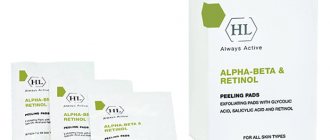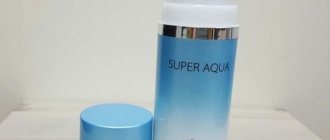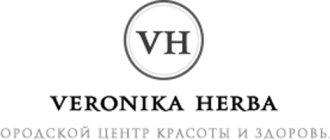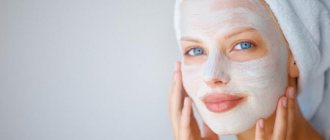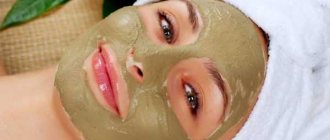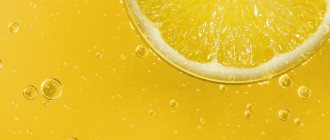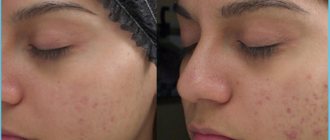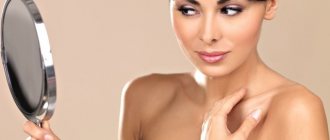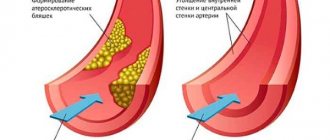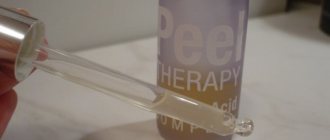Now phytic acid has become available not only for medical, but also for cosmetic needs. Thanks to phytin peeling, the fight against aging, damage and uneven skin pigmentation has reached a completely new level. Phytic acid is unique in that it is neither an ALPHA nor a BETTA acid. This is an independent product with unique properties, isolated from wheat seed cake. Phytic acid has a mild and deep exfoliating effect. In addition, phytic acid binds one- and two-valence metal ions, which trigger oxidative functions in biological systems, including those associated with inflammation and pigment formation.
This feature of phytic acid is associated with its antioxidant, anti-inflammatory and lightening properties. Therefore, on the one hand, the use of this product helps prevent the appearance of age spots, and on the other hand, it effectively eliminates existing ones. Peels using phytic acid are carried out in a beauty salon by a doctor.
Phytin peeling is recommended for aging skin, fresh and old scars, hyperpigmentation, acne, as a preventive measure for aging.
A distinctive feature of phytic acid is that at 50% concentration and a fairly low pH of 1.2, it does not cause damage to the deep layers of the epidermis. This provides a quick effect without discomfort or skin irritation. The absence of burns, discomfort, redness and discomfort for the client with a quick, pronounced and multifaceted effect - these are the main advantages of phytic acid.
We use professional phytic peels RENEW, Israel.
Features of the procedure
The procedure is based on the use of phytic acid, which is obtained from wheat cake or rice bran for cosmetic preparations.
Initially, this method of skin rejuvenation became widespread in Hollywood - with its help, actors got rid of the unpleasant consequences of prolonged application of makeup on the face. Therefore, the second name of the procedure is Hollywood peeling.
Phytin peeling is a superficial type of treatment. Phytin molecules are quite large in size, due to which the substance penetrates only to the upper surface of the stratum corneum.
However, this property of the acid manifests itself only if its exposure time is no more than 15 minutes. Longer exposure may lead to undesirable effects.
Applying a solution with phytin to the skin leads to gentle exfoliation. As a result, dead epidermal cells are removed, skin respiration improves, and metabolic reactions are activated.
This effect not only rejuvenates the face, but also helps to cope with acne marks, rosacea, reduces oily shine, and prevents the formation of pimples.
Peeling with phytin is used when it is necessary to cope with stretch marks on the body, reduce the severity of scars, and remove fine wrinkles.
Phytin peeling also has a brightening effect on the skin. Under the influence of acid, the secretion of enzymes that enhance melamine synthesis slows down - pigment spots become less noticeable.
Hollywood peeling can be done at any time of the year. Recovery after the procedure occurs quickly. There are no painful sensations during the session, and there are few contraindications to this method of facial rejuvenation.
Peeling PRX-T33 in cosmetology – a chemical analogue of biorevitalization
PRX-T33 peeling is a revolutionary breakthrough in cosmetology. After 10 years of clinical trials, this drug entered the Russian market. Dermatologists and cosmetologists in large cities have already been trained in PRX-T33 therapy and can offer this service to their patients. This procedure is carried out all year round, providing the skin with youth and beauty.
PRX-T33 PEELING - WHAT IS IT?
PRX-T33 peeling – chemical peeling for skin revitalization (rejuvenation) – is produced by the Italian cosmetic company WIQOmed. Its use is permissible only in salons and medical centers and only by specially trained employees. Thanks to its formula, it does not destroy the upper layers of the skin, preserving living epidermal cells and removing dead ones. There is no rehabilitation period after this type of peeling, which allows the client to plunge back into her business immediately after leaving the salon. Compatible with most cosmetic procedures.
Important! Most peels are recommended to be done in the autumn-winter period to prevent excess pigmentation, and PRX-T33 peeling is all-season.
5 BENEFITS OF PRX-T33 THERAPY
- PRX-T33 peeling can be carried out at any time of the year, not only in autumn and winter.
- Restoration and rejuvenation of skin without injections! Suitable for those who cannot inject revitalization products.
- The procedure is painless. This is a significant plus for people with a low pain threshold. The level of pain is rated at 2 points on a 10-point scale.
- The duration of the procedure is less than 15 minutes.
- Rehabilitation (recovery) after the peeling procedure is not required. There is only a slight burning sensation during the procedure and redness for 15 minutes after the procedure.
COMPOSITION OF PRX-T33 PEELING FOR CHEMICAL REVITALIZATION
Hydrogen peroxide in low concentration helps disinfect the skin, while increasing its hydration.
5% Kojic Acid soothes skin, reduces pigmentation and inflammation.
8 REASONS TO DO PRX-T33 PEELING
The indications are determined by a dermatocosmetologist. Before prescribing the procedure, the specialist conducts a thorough survey and inspection of the site where the drug is used. Goals of chemical revitalization:
- Fighting fine wrinkles.
- Fight against scars, stretch marks, post-acne, scars.
- Eliminates dull complexion.
- Skin imperfections (pigmentation, freckles).
- Treatment of hyperkeratosis.
- Prevention of photoaging.
- Prevention of age-related aging.
- Preparation for other cosmetic procedures.
10 CONTRAINDICATIONS TO PRX-T33 PEELING
Contraindications for the peeling procedure are also identified by a cosmetologist, these include:
- Individual intolerance to peeling components.
- Allergic reactions.
- Pregnancy.
- Breastfeeding period.
- Fresh skin injuries (cuts, wounds, abrasions, etc.).
- Pustular skin diseases (furuncle, erysipelas, etc.).
- Infectious diseases in the acute period (ARVI, etc.).
- Viral diseases of the skin and other organs (herpes, etc.).
- Also, the results of peeling may be affected by procedures performed in the last 2 weeks. It is necessary to take a break between cosmetic procedures. After botulinum therapy you can do it 2 weeks later. After biorevitalization, mesotherapy can be done after 8-24 hours.
- Taking medications also affects the outcome of the peeling. You should inform your doctor about all the medications you have taken recently, and he will decide on the possibility of intervention.
Important! Before the peeling procedure, the cosmetologist conducts a trial allergy test!
IS IT POSSIBLE TO DO PRX-T33 PEELING AT HOME?
No! PRX-T33 peeling cannot be done at home. This procedure has many nuances. Chemical peeling for the face and body is a medical procedure. It contains TCA (trichloroacetic acid) 33% - this is a high concentration! If used improperly, it can cause chemical burns. This procedure is carried out in the salon by a dermatologist-cosmetologist who has the appropriate medical certificate and has been trained in this peeling technique.
HOW TO DO PRX-T33 PEELING - PROCEDURE PROTOCOL
Preparatory stage. PRX-T33 peeling is applied to prepared skin. At the preparatory stage it is cleaned. It is important to protect the drug from mixing with water. The number of applications of PRX-T33 (varies from 1 to 5, on average 3) is determined by the doctor at the stage of preparation for the procedure.
PRX-T33 peeling is applied using special (nitrile) gloves. Apply with intense movements, avoiding falling onto the mucous membranes, the area around the eyes, and into the eyes. The number of layers in one procedure depends on the skin type, its sensitivity and thickness.
Leave on the skin. Duration of exposure is up to 15 minutes. The doctor decides individually how long to leave the peeling.
Wash off with cool water.
Apply care products from the WIQO line cream and fluid.
FULL COURSE OF PRX-T33 THERAPY
The salon stage includes a peeling course of 4-6 procedures with a break of a week or 10 days. The exact amount will be determined by a cosmetologist. PRX-T33 peeling can be combined with other cosmetic procedures.
Home care with creams complements the course before and after peeling. The use of creams increases the protective functions of the skin, strengthens local immunity, improves the regenerative abilities of the skin after peeling, reduces the risk of side effects, and fights age-related aging and photoaging of the skin. The cream is used in the morning, the fluid in the evening.
Glycolic acid – enhances cell renewal, restores normal blood supply to the facial skin. Skin tone and protective properties increase, oil content and hydration are restored. The surface of the skin is leveled and the color becomes uniform.
Vitamin E (tocopherol acetate) – protects the skin from the damaging effects of the environment and free radicals, helps strengthen local skin defenses, fights inflammation, improves metabolic processes and blood supply.
Phytic acid is an exfoliating agent that fights pigmentation.
Vitamin C is a powerful antioxidant. Slows down aging, activates the protective properties of the skin, improves healing processes, increases skin elasticity and moisture. Participates in skin lightening.
The effect of the procedure is felt immediately. The skin is tightened, smooth, more elastic - lifting effect. Fine lines and wrinkles become less pronounced. Scars, scars, age spots, areas of hyperkeratosis become less noticeable. From procedure to procedure, imperfections disappear. Pores are reduced, comedones are reduced, the skin is cleansed, looks well-groomed and renewed, skin tone and color are evened out.
PEELING PRX-T33 AS CHEMICAL BIOREVITALIZATION
More and more often you can find information about PRX-T33 peeling being a chemical biorevitalization method. He received a connection to this method because of its ability to rejuvenate the skin due to its chemical composition. Chemical biorevitalization is the implementation of revitalization using chemical means.
Biorevitalization was initially proposed as injection techniques (hyaluronic acid) to rejuvenate the skin, normalize metabolism in the skin and restore its properties. Hyaluronic acid is part of most organs and tissues of the human body (skin, vitreous body, cartilage). Today, many doctors use this term to describe various methods of skin rejuvenation. Although a single classification has not been accepted today.
PRX-T33 peeling has a revitalizing (restores youthfulness to the skin) effect due to 3 main components. The strengths of this method include: painlessness, the ability to use at any time of the year, the absence of a recovery period and significant skin problems after the procedure, quick effect, without injections. This is a modern remedy for successfully combating skin imperfections.
Properties of phytic acid and its effect on the skin
In cosmetology, solutions containing from 20 to 50% phytic acid are mainly used. The remaining volume of the drug is filled with other types of acids or other substances that have a positive effect on the epidermis.
However, active exfoliation of the skin, improvement of its structure and functions during peeling occurs precisely due to phytin.
Its main properties, which are valued specifically in cosmetology, are:
- Antioxidant. The acid prevents early cell aging, protects the dermis from free radicals, adsorbs and removes toxins.
- Vascular strengthening. Under the influence of phytin, the walls of blood vessels become stronger and more elastic, which makes it possible to remove visible vascular mesh from the face.
- Whitening. The level of melanin drops gradually, which allows you to cope with even the most pronounced and long-standing hyperpigmentation spots in 6-7 sessions.
- Moisturizing and sebum regulating. After peeling, sebum (sebum) production improves in those with dry skin, while in those with oily skin, on the contrary, sebum production decreases.
- Lifting. Increases the elasticity and firmness of the skin, enhances the production of its own results. The most obvious results of tightening are observed in people over 40 years old, that is, phytin copes well with age-related sagging of the skin, making the oval of the face clearer.
Phytic acid works in several directions at once, which allows not only to cope with unsatisfactory defects, but also has a positive effect on the complexion, evens out its relief, and eliminates signs of photoaging.
Effect of acid on skin
In the beauty industry, phytin is traditionally used as a whitening agent. All acids have whitening properties, which are entirely due to their exfoliating effect. But phytin not only removes the layer of dead horn cells, but also participates in the processes of melanogenesis, blocking the key enzyme of melanin synthesis - tyrosinase.
Phytin is a common component of industrial cosmetics from Japan and Korea. In East Asia, the beauty cult of white skin reigns supreme, so lightening cosmetics are the flagship direction of most cosmetic companies. So far, phytin is found mainly in some lines of luxury brands: Hyosiah, Nuxe (Korea), Kiehl's, Guam, Chanel, Darphin.
Manufacturers of toothpastes have also taken note of the lightening properties of phytin. It is found in LOGONA children's oral care products, Melvita and Oral-B whitening toothpaste.
Interesting to know! Phytin is added to shampoos to stabilize pH in sulfate-free formulas. It is good for the scalp, gently exfoliates dead particles, prevents alkalization, and balances sebum secretion.
Advantages and disadvantages
Phytin peeling is becoming more popular year after year, and the main reason for this is its simplicity, painlessness and versatility.
In addition to this procedure:
- Doesn't require too much preparation.
- Lightens even clearly visible pigmented areas and, most importantly, prevents their reappearance.
- Has an anti-inflammatory effect, relieves the effects of acne.
- Activate the natural processes of regeneration and cell renewal, enhances the production of elastin and collagen.
- It is not contraindicated in conditions of high solar radiation activity, that is, it can be done in the summer.
- Suitable for cleansing faces with overly sensitive skin and signs of rosacea.
- Can be performed at any age.
- Compatible with a number of other cosmetic rejuvenation techniques.
- It does not require strict restrictions during the rehabilitation period, and recovery is much faster compared to other types of chemical peels.
Among the disadvantages, patients note a noticeable tingling of the skin after applying the solution.
You also need to understand that with the help of phytin peeling it will not be possible to remove rough scars or severe acne marks; to find out how best to do this, follow the link above.
This procedure will only help make them less noticeable.
You need to know that large-scale studies of phytic acid have not yet been conducted. Its safety at the time of application and positive effects on the skin have been proven, but there is no data on the long-term consequences of such peeling.
The essence of peeling
There have been no clear domestic studies on the effectiveness of phytin peeling. Cosmetologists can only rely on research from cosmetic companies (partially interested, of course). But in Asia and America, the effect of phytin on the skin was studied in detail in order to include it in industrial creams and serums.
Soongsil University in Seoul conducted a seven-week, placebo-controlled study proving the whitening properties of phytin starting at a dosage of 0.5%.
The ability of phytin to regulate sebum production in the pores has also been proven at the University of Seoul. A tonic with phytin 0.5% was used on patients with oily skin for 4 weeks. After the course, scientists recorded sebum production levels that are standard for those with normal skin.
Also, phytin peeling is a useful choice for those with porous skin with comedones. It gradually removes the hated oily sheen and prevents the formation of unaesthetic “blackheads”. They appear as a result of sebum oxidation upon contact with oxygen. Phytin, as a chelator and antioxidant, prevents oxidation and darkening of comedones.
Contraindications
Phytin peeling cannot be performed if:
- Hypersensitivity, both to phytin itself and to other components included in the composition of the selected product.
- Pregnancy and during lactation. The toxic effects of phytin on the developing fetus have not been proven or disproven, so it is better not to risk the child’s health.
- Herpes, molluscum contagiosum, eczema, psoriasis. Acid can intensify the manifestations of dermatoses or contribute to the spread of infection.
- Violation of the integrity of the epidermis. Acid getting into wounds and scratches increases their inflammation, which can ultimately result in the formation of rough scars.
- Malignant neoplasms. Peeling can cause tumors to grow.
- Diabetes mellitus, severe diseases of the kidneys, liver, heart.
The cosmetologist should be warned about all chronic pathologies at the initial consultation. You should not hide them from the doctor, since ignoring contraindications leads to undesirable consequences and the appearance of defects on the face that will be difficult to cope with.
Indications and contraindications for use
Indications for the use of phytin peeling affect skin problems of women of all ages:
- In adolescence, this is the fight against acne and post-acne, as well as reducing the production of sebum.
- For young girls under 30 years old, this is the prevention of age-related changes, aimed at eliminating fine wrinkles and maintaining skin tone.
- In anti-aging care, this means getting rid of pigmentation, wrinkles, and sagging skin.
In addition, phytic acid is recommended as the main peeling component for the following problems:
- Photoaging;
- Shallow scars and cicatrices;
- Cuperosis;
- Dehydration;
- Dull, tired skin.
This type of peeling can also be effective as a preparatory stage before procedures that affect the skin more deeply (microdermabrasion, laser cleansing, etc.).
But despite all the advantages and beneficial properties of phytic acid, it also has contraindications:
- Pregnancy and lactation;
- Allergic reaction;
- The presence of birthmarks, papillomas, warts and other neoplasms;
- Skin diseases (dermatitis, eczema, rosacea, psoriasis, etc.);
- Scratches and other skin injuries;
- Burns;
- High body temperature;
- Increased skin sensitivity;
- The presence of active inflammation on the face;
- Oncology;
- Problems with the thyroid gland.
Before the procedure, you must consult with your doctor in case of heart, kidney or pulmonary failure.
Types of phytin peeling products by composition
In exfoliating cosmetic preparations, phytic acid is the active substance.
But at the same time, it is also combined with other components, which allows you to choose a remedy depending on the main problem:
- Glycolic and tartaric acid reduce the signs of rosacea and prevent the reappearance of capillary mesh on the face.
- Lactic and mandelic acids have a pronounced rejuvenating effect.
- The maximum whitening effect is achieved by preparations in which phytic acid is combined with glycolic, retinoic, azelaic or resorcinol.
- Vitamins E and C in the composition enhance the regenerative abilities of the skin and enhance its protection.
The concentration of phytic acid can be from the very minimum to 60-70%. But such compositions can also be used at home, strictly adhering to all the steps of the procedure indicated in the instructions.
Properties
The most powerful antioxidant of natural origin prevents the appearance of signs of aging. Due to its properties, the component stops the oxidative degradation of lipids and prevents the formation of hydroxyl radicals. Phytic acid can also inhibit xanthine oxidation. The second property is whitening. Deactivation of tyrosinase, an enzyme whose excess is characterized by hyperpigmentation, by phytic acid occurs differently than in the classic version. Professional dermatological products often enhance the effect of acid due to the plant ericolin, which also blocks tyrosinase. Phytic acid is safe and can replace vitamin Q.
Phytic acid is a chelator that forms complex compounds. In terms of its capabilities, it is superior to tetrabasic carboxylic acid and has advantages in relation to complexone-III. In a number of countries, complexone-III is banned due to the fact that it is synthesized by combining highly toxic substances that are extremely hazardous to health. Its safe alternative is phytic acid, which is actively used in various fields, for example, the food industry and the cosmetics industry. Phytic acid has specific effects, and therefore its use does not cause concern: the removal of bound metal complexes from the body occurs bypassing the kidneys, through the gastrointestinal tract.
Preparing for peeling
Before phytin peeling, skin preparation is required. It is carried out for 7-10 days, and for severe pigmentation - from 2 to 3 weeks.
Pre-peel preparation includes applying glycolic acid gels to the face daily. At the same time, you can use 15% mandelic acid.
The use of these products loosens the epidermis, which facilitates the penetration of phytic acid deep into the dermis and, accordingly, has a positive effect on the results of peeling.
What it is
Phytic peeling is a cosmetic procedure during which the facial skin is treated with a special chemical complex based on phytic acid. This compound is prepared from rice and wheat pomace. Thus, you can get rid of acne, age spots, reduce the number and depth of wrinkles.
Stages of the procedure
Phytin peeling takes on average about 40-50 minutes. The number of sessions per course is determined by the severity of the defect and the condition of the skin; there can be from 3 to 9. The interval between procedures is 7 days.
Peeling sequence:
- Remnants of decorative cosmetics are removed from the skin, and the face is cleansed of impurities.
- The skin is degreased. Then you need to wait until it dries completely - the interaction of the components of the exfoliating agent with wet skin can lead to undesirable consequences.
- A solution with phytic acid in an amount of up to 2 ml is distributed evenly over the face and neck. It is best to use a thin brush.
- After 5-15 minutes, the acid is removed from the face with plain water. At the first session, it is recommended to keep the composition for no more than 7 minutes, then this time gradually increases.
- A special tonic gel is applied to the skin, followed by a cream with nourishing ingredients.
- After 5-10 minutes, you need to wash your face again and reapply the tonic composition.
Mild hyperemia and slight swelling persist for 3-5 days. On the 3rd day, peeling of the skin is usually observed. Such reactions indicate the effectiveness of the peeling.
How the procedure is carried out (8 stages)
The phytin peeling technique is simple and safe, so it is often used at home.
Modern manufacturers of cosmetic products produce the product in a form convenient for use.
This allows you not only to save time on visits to salons, but also to reduce financial expenses.
A self-performed procedure will cost several times less than a session with a specialist.
To achieve the desired result and protect yourself from burns, you must strictly follow all the rules of the procedure. You can find them in the instructions included with the drug.
To prevent negative consequences, it is worth consulting with a cosmetologist about the condition of the skin.
Phytin peeling is often carried out according to the following scheme:
- removing impurities and makeup residues using cleansing foam, tonics, lotions that contain BHA and AHA acids;
- applying glycolate for no more than 10 minutes;
- distribution over the skin of a thin layer of a composition containing phytic acid (optimal concentration 20 - 50%);
- holding for 7 minutes, if the first procedure – 12 minutes;
- washing off the active composition with water;
- use of tonics;
- using a mask with soothing or regenerating properties;
- removing the mask.
The procedure is completed by applying a cream with a protective effect. On average, the duration of these manipulations is no more than 40 minutes.
There is no pain during the procedure. The person may feel a tingling sensation. This can be tolerated.
Plastic surgeon Adam Schaffner
To achieve a pronounced lasting result, you will need to repeat the procedures at intervals of 1 - 2 weeks for 30 - 60 days. The exact number of sessions is selected individually for each person based on skin characteristics.
If you have doubts about performing all the manipulations yourself, it is better to contact a professional cosmetologist. The price of phytin peeling in Moscow salons starts from 3 thousand rubles.
Complications
Severe adverse reactions after phytin peeling are extremely rare. They are mainly associated with hypersensitivity to the components of the drug or non-compliance with the instructions for use.
In most cases, patients complain of increasing erythema, that is, severe redness of the skin. An allergy is indicated by the appearance of a small rash, severe itching, and increasing burning sensation.
If the rules of asepsis are not observed, pustules may form. Dehydration of the dermis often occurs, that is, severe dehydration, expressed by increased dryness.
Careful care of the renewed epidermis helps to cope with most problems.
For allergic reactions, antihistamines are prescribed. If a herpes infection worsens, you will need to take antiviral drugs.
Almond-phytin cleanse
Almond-phytic cleansing is the use of products that contain both mandelic and phytic acids in concentrations of 15 and 50%, respectively. Such peels are carried out at the age of 30 years and older; they are optimally suited for solving the problem of oily skin with acne, acne and inflammation. Israeli manufacturers often offer products of this type for peeling:
- Brightening almond-phytin peeling from Onmakabim - can be used at the age of 25 years and older, has a powerful brightening and restorative effect, suitable for cleansing any type of dermis.
- Age-related almond-phytin peeling from Onmacabim is designed to smooth out wrinkles, increase skin tone/elasticity, lighten the overall tone and whiten pigment spots that have appeared against the background of general aging of the body.
Peeling results
A noticeable change in the skin for the better can be seen after the first phytin peeling session. The face becomes smoother, its dullness and oily shine disappear, areas of irritation and hyperemia become less visible.
Phytin peeling course:
- Tightens enlarged pores.
- Eliminates pigmentation, wrinkles, acne marks.
- Allows you to make scars less noticeable.
- Increases skin firmness and elasticity.
- Prevents inflammatory reactions.
The result lasts for at least 6 months. Compliance with the rules of facial care, a healthy diet, and taking multivitamin complexes prolong the effect of the peeling. The procedure can be repeated several times, of course, if the cosmetologist does not see any harm to the body in this.
Indications for use
Like any cosmetic procedure, phytin peeling has its own list of indications. The list includes:
- problematic skin;
- enlarged pores;
- the presence of pigment spots;
- demodicosis beyond the acute stage;
- the appearance of fine or deeper wrinkles;
- keratoma growth;
- formation of stretch marks;
- less often – acne, post-acne.
In some situations, this technique becomes a preparatory step before laser resurfacing or microdermabrasion.
Skin care after the procedure
Skin cleansed of dead cells must be especially carefully cared for for at least one month. In the first few days, you should not touch your face often, especially rub it.
Wash at this time with warm, filtered or boiled water. Also, you cannot use decorative cosmetics for 3-5 days.
The basis of care is creams with moisturizing, photoprotective, nourishing and regenerating components. But first, they use forms that are light in texture, that is, gels, sprays, foams.
Then they switch to creams containing ceramides, panthenol, hyaluronate, phospholipids, shea butter, and shea butter.
Careful selection of cosmetic products and daily use will minimize the risk of scarring, hypopigmentation or hyperpigmentation that may appear after peeling.
Also, before going outside, you should not forget to apply cream with a protective factor of at least SPF 30 to your face.
Opinion of cosmetologists
Experts have mixed, and sometimes lukewarm, opinions about phytic acid. The principle of action of this substance has not yet been studied by officially recognized scientific organizations. A cosmetologist cannot refer to a certified procedure protocol. It is easier for him to offer the client safer, but probably not as effective, alternatives.
Is it possible to do phytin peeling yourself?
Products for phytin peeling are commercially available. That is, anyone can buy them, but is it worth doing such exfoliation yourself?
The procedure does not require the use of special devices and does not affect the deep layers of the skin, so such peeling is not prohibited from being carried out at home.
However, it is imperative to strictly follow all stages of the session, do not hold phytic acid for more than 15 minutes, and after completing the procedure, apply a cream suitable for your skin type to your face.
It is advisable to make an appointment with a professional cosmetologist for the first session. This way you will be able to fully understand the procedure, and the specialist will give professional recommendations regarding its implementation and subsequent care.
Preparatory stage
A qualified cosmetologist will definitely prescribe preliminary care before the procedure. For example, wiping your face with a tonic with fruit acids.
As a last resort, before the procedure itself, you can make a rolling mask to remove dead cells from the surface.
It’s even better to choose an acid line for daily care, not only before a session in the office. Acids are a new era in the beauty world. Their benefits for oily and aging skin have been repeatedly proven. Today, every self-respecting brand has already released a series of products with AHA or BHA.
Phytin, like many other acids, is prohibited from being applied to the skin if there is any damage to the epithelium (pimples, wounds, cuts, insect bites, etc.).
If the patient is predisposed to relapses of herpes, it is necessary to take a course of Acyclovir before the procedure. Even after superficial peeling, the epidermis is damaged and local immunity in the treated area is reduced. And this provokes relapse and spread of the viral infection.
What procedures can it be combined with?
Exfoliating the skin with phytin in combination with other aesthetic techniques gives a more pronounced rejuvenating effect and allows you to cope with even the most severe skin defects:
- Combination with biorevitalization and mesotherapy. Biorevitalizant and agents used in mesotherapy increase the metabolic activity of keratinocytes and fibroblasts, and peeling activates the division of these cells.
- Combination with botulinum toxin injection. For noticeably expressed wrinkles, Botox injections are first given, then peeling is carried out. This allows you to rejuvenate the skin even with severe age-related changes.
- Combination with fractional photothermolysis. Phytin peeling is done before photothermolysis in order to prepare the skin for the evaporation of water from the epidermis.
Advantages and disadvantages
The undeniable advantage of phytin peeling is its effectiveness against hyperpigmentation. Old spots on the skin are very difficult to remove even with medium peels. Phytin also acts on dead cells and on the synthesis of melatocytes.
But phytic acid acts only in the epidermis; it does not force large-scale regeneration and compaction of the basal layer, therefore it gives a mediocre rejuvenating effect.
Also, the severity of anti-acne properties in salicylic, retinoic, and azelaic acids is much higher.
Preparations containing phytic acid
Many manufacturers produce phytin-based cosmetics for peeling.
Usually the bottle contains 10-30 ml, this amount is quite enough for a course of skin cleansing.
- Peeling lotion Renew Renew (Israel). Available in two types. Phytic Acid Peeling solution contains only 50% phytic acid and is best suited to correct age-related changes. In addition to 50% phytic acid, Phytic Tartaric Acid also contains 20% tartaric acid. The combined effect of the two components makes it possible to achieve a pronounced antioxidant effect. Both products are suitable for rejuvenating skin of any type.
- GENTLE SHINE PEEL PLEYANA (Pleyana). This is a multifunctional peeling product consisting of phytic, glycolic, aminocaproic, and succinic acids. Pleyana is most suitable for whitening the skin, reducing inflammation, and normalizing the functioning of the sebaceous glands. It does not have an aggressive effect on the epidermis and at the same time activates natural tissue renewal.
- Lykoberon. Produced in Russia. This is a multi-acid peeling, which also contains natural plant components. Helps cope with acne, effectively cleanses pores, smoothes out fine wrinkles. Suitable for peeling any skin, regardless of its type.
- Onmacabim (Onmacabim). Produced in Israel. In addition to phytin, the complex includes salicylic and glycolic acids. Peeling with Onmakabim evens out the relief, lightens pigmented areas, activates the secretion of collagen fibers, and reduces the severity of acne.
- Glycolicpeel Whitening. Produced by the Russian company MedicControlPeel. The product is enriched with kojic acid, which effectively reduces the secretion of melanin. Glycolicpeel Whitening peeling does not require the application of sunscreen, even if the procedure is carried out in the summer.
- COMPLEX PEEL SOLUTION. It copes well with removing fresh and old scars, is suitable for treating acne, and strengthens sagging aging skin.
How does the procedure work?
Phytin peeling is a simple exfoliation option. But even such superficial intervention should be trusted only to a qualified master.
Phytin is well tolerated by skin of any type, but allergy tests are performed before the first procedure.
The simple process of applying and exposing the peel consists of the following steps:
- Removing makeup, cleansing skin.
- Preparing the skin with an acid toner or rolling mask.
- Disinfection and degreasing.
- Applying peeling with a cotton sponge.
- Exposure up to 15 min. (small tolerable tingling is acceptable).
- Rinse, apply moisturizer and sunscreen.
The maximum period of exposure to phytic acid is 15 minutes, after which the effect on keratinocytes and destruction of the horny “envelopes” begins.
Phytin peeling does not require neutralization, but if a combination cocktail with glycolic or lactic acid is used, you need to stop the reaction with a neutralizer.
Note! Phytic acid is poorly soluble in water and alcohols, but much better in other acids (mandelic, lactic, glycolic). It is necessary to carefully study the composition of the peeling product to prevent side effects associated with additional ingredients. AHA acids in the composition, even in minimal concentrations, require neutralization.
Patient reviews
The majority of beauty salon clients who have tried the effects of phytin evaluate this peeling as a gentle, gentle exfoliation and respond positively to the procedure.
Peeling is well tolerated without pain or severe discomfort. There is some peeling on days 2-3, but it is usually insignificant.
Phytin peeling restores freshness to the face, helps to cope with pimples and blackheads, and somewhat lightens pigmented spots.
Many are also attracted by the fact that rejuvenation with phytin is possible for sensitive, rash-prone skin. After the session, the face does not feel tight, there is no feeling of dryness or burning.
One of the disadvantages is that the effect of such an influence depends on how accurately the cosmetologist’s recommendations are followed during the recovery period.
Other reviews.
How much does the procedure cost in salons?
Phytic acid is an inexpensive reagent, but branded exfoliation products are quite expensive. This is explained by their relative uniqueness - only a few companies produce products with phytin.
One session costs from 2–5 thousand rubles, depending on the cosmetologist. You can agree on a “wholesale rate” if you order the entire course from one cosmetologist.
There are specialists who offer phytin peeling for 500–1000 rubles. It’s not a fact that these are ignoramuses and charlatans. simply cosmetologists who know how to dilute acids on their own and prepare proprietary mixtures using the same cheap ingredients. When choosing a cosmetologist, you need to evaluate his education, work experience, customer reviews, and the authority of the clinic.
Reviews from cosmetologists
Phytin peeling is also loved by many professional cosmetologists. Unlike deep methods of exfoliation of the epidermis, this procedure practically does not give any side effects, is easily tolerated, and does not require strict restrictions after implementation.
The results are most pronounced when treating skin with acne and dermatomycosis in remission. After a course of peeling, the severity of pigmentation decreases and wrinkles become less noticeable.
However, many qualified cosmetologists warn that no scientific research has been conducted on the effect of phytin on the dermis.
From a medical point of view, phytic acid has anti-cancer properties, which has been proven through research.
But the long-term consequences of such exfoliation are unknown, so before choosing this rejuvenation technique, you need to evaluate all the pros and cons of the procedure.
Reviews
Let's read reviews from cosmetologists and people about phytin peeling.
OKSANA, 33 YEARS OLD:
“The Pleyana phytin peeling was a real discovery for me.
I decided to try it on the recommendation of a friend to eliminate post-acne. After a month of use, I noticed that my skin became much clearer, my pores were narrowed, and even wrinkles were smoothed out. I want to know how long the results will last.”
SOFIA, 40 YEARS OLD:
“My cosmetologist advised me to use peeling with phytic acid.
I performed the procedure in the salon, I was afraid that it would sting a lot, but in fact I didn’t feel any pain or discomfort. After procedures with other acids, I had to sit at home without leaving because of the severe redness of my face. There was nothing like that with this peeling. I recommend!"
Post-peeling skin care
To achieve an excellent result, it is recommended to organize post-peeling care, which includes the use of photoprotective, restorative and moisturizing creams for at least a month.
This will ensure normal regeneration of the skin and accelerate epithelization. At the very beginning of the rehabilitation period, special preparations should be used in the form of liquids, gels or foams, which are easy to apply, absorb well, and do not require rubbing. Approximately on the second day, when peeling appears, creams should be preferred.
Actively moisturizing the skin in the post-peeling period will not only eliminate unpleasant subjective sensations such as a feeling of tightness and dryness of the skin, but also ensure accelerated epithelization, and also reduce the risk of scarring. In this case, it is recommended to use products with hyaluronic acid, which has a pronounced hydrating effect. With the help of hyaluronic acid, a polymer network is formed on the skin, which helps capture water molecules and ensure the normal migration of regenerating cells.
Actions related to the restoration of the epidermal barrier will simultaneously reduce transepidermal water loss by the skin. Preparations containing a sufficient amount of phospholipids, shea butter, as well as ceramides and natural waxes will help with this.
Products containing a complex of regenerating substances such as retinol, placenta, and panthenol will help speed up the post-peeling restoration of the skin.
Cosmetic preparations containing antioxidants such as bioflavonoids, selenium, and tocopherol will help to significantly reduce the severity of post-peeling inflammatory reactions and the risk of developing hyperpigmentation.
In the post-peeling period, it is very important to prevent the development of herpetic exacerbation. For these purposes, patients who experience more than two such exacerbations per year are recommended to undergo specific therapy using Valtrex or Acyclovir.
Useful video
Watch this video about the benefits of phytin peeling:
Similar articles
- Phytin peeling
For facial rosacea, many procedures are prohibited. But peeling for rosacea is allowed, but only certain types. Which one can be used - salicylic, glycolic, diamond, Jessner, carbon? What kind of homemade can you make? Is it possible to do cleaning, including ultrasonic cleaning? Is it possible to peel for rosetsea? Read more - Peeling after biorevitalization: is it possible to do...
The peeling procedure after biorevitalization is recommended by many cosmetologists. But can it be done and when? Which one to choose - chemical, yellow, retien? Read more
- Superficial facial peeling (medium, chemical)…
A procedure such as superficial facial peeling is quite often performed in salons. However, some types may have side effects. How often should I do a medium chemical peel? What result? Can there be side effects? Read more
- TCA facial peeling: how to perform medium, chemical…
The TCA facial peeling procedure (medium, deep or chemical, yellow) makes facial skin clean and eliminates many problems. What will be the effect day by day? What does the skin look like after? Read more
